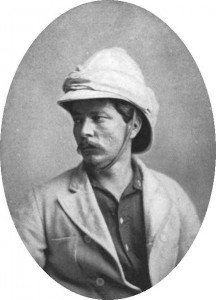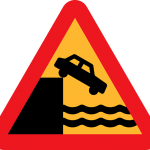Over the last couple of days I’ve been looking through some of the books (and by “books” I mean books, with covers and paper pages) I’ve bought over the last ten years, in an attempt to bring some order to my bedroom and den. I’ve been using Kindle for most of my fiction reading since the first Amazon Kindle, and so most of the books I’ve been looking at involve my various interests over that period. I’ve acquired a lot of books about photography (a big interest in the 2005-2006 time frame), and many, many books about philosophy, theology, and other aspects of the Catholic faith. Some of them have become stalwart friends; others were interesting at the time but won’t be re-read; and others I’d gladly see the back of.
But it got me reflecting on how I pick up a new topic that I don’t know much about. In a nutshell, I read a lot. A whole lot. I buy lots of books that look like they might be helpful, and some are and some aren’t. Some I devour, and some I attempt and then pass by, for a time or forever. I suck in information by the ton, and ultimately begin to make sense of it.

I often think of this process as “map-making”: I’m building my mental map of a new territory, much as I would built a mental map of a new city.
The first step is to map the broad outlines: the major landmarks, the prominent neighborhoods, the places I want to go and the places I don’t want to go. I do that by looking for introductory material, or surveys of the whole subject. When I began to get interested in history, decades ago, I began by picking up a copy of Will and Ariel Durant’s The Story of Civilization. The Durants aren’t always accurate, it seems, and I found that they got mired in minutiae after about the Renaissance, but for the span up to then they gave me that broad sweep I was looking for. When I began to get interested in photography, I picked up Bryan Peterson’s Understanding Digital Photography, a book that got me started in understanding what I was trying to do, and led me on to other things. When I began to get interested in the Catholic Church I read Catholic blogs, and then books recommended by Catholic blogs, and on and on, and things progressed fairly well.
But sometimes it isn’t that easy. Early on in my Catholic reading I devoured G.K. Chesterton’s biography of St. Thomas Aquinas—so far, so good. And that led me to Peter Kreeft’s Summa of the Summa, an abridged version of Thomas’ Summa Theologiae with comments. I was excited to get into it…
…and I bounced. I couldn’t see what Thomas was trying to do; I didn’t understand how he used words; I didn’t get it. I wanted to, but I didn’t.
You might say that I didn’t know where to begin making my map: I didn’t know how to situate what he was saying relative to other things I knew. I felt lost, at sea, and I hate that.
Now, there are two ways to deal with material like this. The first (and it’s a good way if you can hack it) is to just keep reading, skimming what you don’t understand, latching on to what you do understand, trying to fill in the major bits from the author’s point of view even if you don’t see how they go together. And then you go back and read it again, more carefully, paying attention to the words and working out what they have to mean for everything to make sense. This is Mortimer Adler’s approach, as immortalized in How to Read a Book, and it’s a neat trick if you can do it. But you have to have a really good memory and the ability to hold unfamiliar concepts in mind even though you can’t see how they connect up with each other and with what you already know.
Alas, I’m not especially good at that. It might be my software background, but I find I need to build things from the ground up, each brick fitting in with each other brick, until I’ve got a structure that will support its own weight. (I sometimes think my success as a software developer is my ability to construct my software so that the amount of information I have to remember at any one time is minimized. I might write about that some day.)
So what do you do instead? You look for books that cover the subject at a simpler, more basic level. You look for books that approach it from different points of view. You look for that fixed point that relates what it’s all about to what you already know. Mixing metaphors egregiously, I call that “finding a place to hang my hat.” It gives me a place to stand.
Learning a subject of this kind is more like fighting your way through contested terrain than it is like mapping a friendly territory. The terrain is rugged, and there are enemies who fight back every step of the way. The first thing you need in this case is a bridgehead…and once you’ve established your bridgehead you send out columns of troops to conquer territory. And you look for allies to help you in your struggle.
Finding that bridgehead can be difficult. But once you’ve got it, once you’ve got your feet under you and you’ve got your hat properly hung up, you’re set.
For me, with respect to Thomist philosophy and theology, my bridgehead was, first, Jacques Maritain’s Introduction to Philosophy, and second, Edward Feser’s books (disregarding The Last Superstition, which is too polemical, though I’ve known it to work for some people). I’ve been fighting my way through it ever since.
Yesterday I looked through some of the books I bought as I was looking for that bridgehead; some of them I’m getting rid of, and others I plan to look at again, in hopes that I now have the background to make sense of them. We’ll see.











